This is a transcript of the Gerry Anderson commentary for the pilot episode Identified. The photoshots indicate the start of each section of commentary.
UFO was made in 1970. That’s thirty years ago. I had made some nine television series for Lew Grade all featuring puppets and we were beginning to drown in our own product and Lew one day said to me ‘Gerry, I think the time has come for you to turn to live action’
And so I did and UFO was the very first series that we made in live action.
I have to confess that I directed the first episode, And I say confess because when I reviewed it I realised just how slow the pace was and I sat there thinking ‘I wish I could do it all over again’. But I suppose for many people who remember the series it will bring back, hopefully pleasant memories, and I’d like to talk about some of the things that happened before and during the production.
First of all, the special effects in the series were made by Derek Meddings, and of course today we have all sorts of wonderful aids like computer generated images, but when I looked at the show the one thing that did stand up was the special effects.
This particular sequence was shot in Black Park just behind Pinewood Studios .One of the things that I do remember is that dear old Barry Gray who wrote wonderful music for all of my series, on this particular occasion wrote a piece that I felt wasn’t exciting enough.
And at the music session I asked one of the percussionists if he would cover the sequence with percussion, and he said he would, and I said ‘Okay well we’ll do a rehearsal’ and he said ‘No no, I’ll do it straight off’. And as you can hear he made a terrific job of it.
This little girl (Andersonis referring to the actress who played ‘Jean’) did very well but unfortunately for her she didn’t last very long.
I remember filming this aircraft landing and we were given the use of the aircraft and because I was trying to do a really good job I asked the pilot to land right by the camera and he made no less than ten attempts until finally I accepted what we had. I mean looking back it was entirely unimportant that he should have landed close to the camera, but there you are, I was trying my best. I believe this aircraft is still in service
This of course is Ed Bishop, who became my favourite actor. He was a man who always turned up on time, always knew his lines, always very, very co-operative and really just a very, very good actor. I thought Ed would become an international star And I think it’s very sad that he didn’t, but that was nothing to do with his ability.
On this particular sequence it featured a UFO attack and Derek Meddings had laid charges all the way along the road and because it was a television series it was not the sort of thing we could afford to do twice. And so there was a lot of preparation and when we finally took the shot and the UFO attacked, (any minute now) all these charges were let off and of course we had a number of cameras covering the scene and I remember when it was all over I called out to the various cameras how was it and I got reports; you know.. ..number one camera okay, number two okay, number three okay. And Number four – the operator was a guy by the name of Alan Perry, and he appeared; he actually stood up out of the bushes, and I remember seeing a jet black face with two eyes peering out,. I mean he’d caught the blast, he wasn’t hurt but he looked quite ridiculous.
This Rolls Royce was quite expensive to hire and for those of you contemplating buying a Rolls, what you are about to see is not the way to drive one.
I think Ed looks the part here doesn’t he? Wonderful.
Here come the charges, and this is not the way to drive a Rolls.
The UFO, which you’ll see in a moment was really quite difficult to fly because it was actually dangling on a piece of wire and of course it had to fly so that ii didn’t do anything other than fly smooth and straight.
I’d love to tell you that we actually wrecked a real Rolls Royce, you know, no expense spared, but of course that was a model shot.
Now Harlington-Straker Studio was in fact a studio in Elstree. It began its life as British National; it was then taken over by ATV, the company I worked for, and so of course it was relatively easy for us to go in there and film the main titles. The Model T Ford you see came from one of my puppet shows called The Secret Service and the car in the foreground was specially made for the series. The body was made of beaten aluminium, here it is again; it had gullwing doors. Seemingly they operated automatically but in fact always what happened was the prop man would d run in out of picture and raise the door. But it all looked pretty realistic.
The show was produced by Reg Hill, one of my business partners, Lovely man who sadly died recently. This is the interior of the ATV studios which we also used.
Ed with his faithful secretary Miss Ealand, and when I say faithful I’m not sure that’s what I really meant. I’m sure she was faithful but I wouldn’t know. I had the problem that we were making a sort of a futuristic programme and the cost to building futuristic sets was phenomenally high and we couldn’t afford to do it, and I really didn’t want to compromise so I came up with the idea of making SAHDO HQ under a film studio and in this way we were able to build the main set and do a really good job of it. Why a film studio? Well we put the control room underground and in that way nobody knew that the headquarters existed there.
One of the things that has always amazed me, and that is, that Ed Straker and visitors would go in to the office and the whole office would go down rather like a lift in to the underground headquarters. And that was fine, but here we see George Sewell by the window and down he goes.But why was it that nobody in the studio ever saw it go down? I didn’t think of that at the time but on reviewing the picture, ready for this commentary I thought you know, I’m surprised that somebody in the Studio didn’t say ‘Why is that office going into the ground?’ There we are; nobody seemed to notice.
George Sewell seemed to have a fascination for women’s bottoms which I suppose is fair enough. But again on looking at the film I was quite amazed at the number of times he took an interest in this particular subject. You see, what I mean you know, here’s a set that is all shuttered concrete, filled with all kinds of computers and what was then futuristic equipment . What we did was we had our own company which used to build all this gear. The managing director was a man by the name of Don Fagan…
..and the wonderful thing was that whatever props he made were all electrically operated and they always worked perfectly which was marvellous. George Sewell, I’m not just saying this, I mean everybody praises their artists because they feel they have to, I’m being quite genuine when I say that Ed and George were great great guys in every way. Good artists, co-operative, and really really helpful.
In the background here you can see part of a big mural which was painted by our assistant art director Keith Wilson. One of these chaps who could sot of throw paint on a canvas and then ride over it with a bicycle and that sort of thing and he would have a wonderful effect. I remember I started a little company with him. He was going to all himself Paris. The company was called Paris Designs and we were going to sell these all over the world, and at the end of two years we hadn’t sold one. And that was the end of that idea.
Ed was given a wig, which I think helped to make him really interesting and looking right for this particular show.
Here you see one of our model shots of Concorde type landing with nose at some 17 degrees up and the snoop down. The flight deck is rather bigger than Concorde but that because we were looking to the future.
Smoking of course was allowed on screen in those days, so we weren’t quite as sure as we are today that it caused lung cancer and all sorts of other diseases. But I remember I asked Ed to blow a smoke ring and I thought to myself; ‘this shot is going to go on forever’. I imagined myself saying ‘take fifteen now’ you know, but he did it first time. Amazing guy.
We put a SHADO base on the moon, the idea being that interceptors would be able to take off and intercept UFOS long before they entered Earth’s atmosphere. And here again we tried very hard to make the sets look as futuristic as possible, bearing in mind again that it was 30 years ago when this was done. This was the control room and the girls wore purple wigs, not as a fashion accessory; it was my idea of making the wigs part of the uniform. The commander was played by Gabrielle Drake. I think we were ahead of our time in as much as when I suggested that we had a female as the Moonbase commander everybody said ‘ You’ve got to be joking Gerry. A female, in charge of Moonbase?’ But it was just that I could see what was coming in terms of women assuming more important roles in life and in a way it was a sort of a prediction that came true. The only thing I would say is that I’m not sure, certainly in this episode, that I was able, as a director, to get them to carry off the part as if it was realistic.
One of the girls who is seen here changing her clothes was .Shakira Baksh. I remember when I was directing her, I mean I thought she was the most beautiful thing I’d ever seen, but I just couldn’t get her to do what I wanted, and I’m ashamed to say that I lost my rag and I gave her a pretty hard time. And then some time later I read that she had married Michael Caine and since then I’ve been terrified that one day I might meet Michael Caine and he’d punch me on the nose for what I did to his wife. I’m sure she must have told him, sometime or other.But the idea of these uniforms was that you could rip off bits and pieces and turn it into casual wear for off duty. I mean, looking back I think it would have been far better if they could have changed into a fresh set of clothes. But it was a gimmick and I think it added interest.
Now, here again you see we had a black. I‘ve never been a racist and all the way through my shows I‘ve tried to give minority people a fair share of screen time. And this is something I am very proud of because of course today it’s not unusual thank heavens and it’s accepted by most people but at the time it was something fairly daring.
A lot of the people employed on this show, the technicians, worked with me making all the puppets shows and when I got the break to go onto live action I thought they deserved to come with me and have a break as well. This is Skydiver, one of the SHADO submarines. The outfits, you know, pretty snazzy I think, again in an effort to look futuristic. We certainly assumed that there would be atomic submarines and that they would be fully air-conditioned and that people would be able to walk around nice and clean instead of being covered in diesel oil as they were in the Second World War.
Here’s a scene where Straker is bawling out one of the operatives who had let some kind of information slip, and was deemed to be a security risk. I, looking at it now, I think the scene was overdone. It was overlong. After all it was only a minor incident but you know, they you are you sort of live and learn. Ed had this quality of being a very believable commander and yet also being a man with a heart. And he always seemed to be able to switch from one to the other with great ease. Of course some other thing that helped Ed was his vivid blue eyes. You see these kind of eyes on Hollywood pictures and usually the artists are wearing tinted lenses to enhance the blue, but not with Ed, that was; his eyes were totally nude I can assure you.
This is Peter Gordeno who was the sub commander. Peter was a great dancer and that was his forte, and he added, I think, quite something to the series. A little while ago I went to a Fanderson convention. Fanderson is a fan club of which I’m the honorary president and Peter Gordeno turned up and at the end of the evening he and his wife led the dancing which was absolutely wonderful. Needless to say I didn’t dance. I retired to the bar because that’s not my scene. It’s not really ‘it’s not my scene’ ( laughter) I can’t dance that’s what I’m trying to say.
As this aircraft takes off perhaps I could explain. It was shot on what we called a ‘rolling road’. This is something we had invented and built. It comprised a horizontal piece of hessian with a road painted on it and then vertical pieces of hessian with near background and distant background and sky and all these revolved at different speeds to create the illusion of perspective and this piece of equipment is still in use thirty years later.
This is the interior of S.I.D. the spy in the sky. Kind of silly really because it now looks like a telephone exchange I mean, really should have been packed with electronics but, that’s what we thought we thought it would be like at the time. Now the whole idea of Skydiver was that the front section would be an aircraft. I remember in the second world war German U Boats were plagued by British aircraft who would catch them on the surface and drop depth charges and bombs before they could submerge and of course they had no air defence. And it occurred to me that it would be a good idea to have the front part of the submarine as an aircraft. And of course it used to break away and fire its engines underwater and then it was able to defend the sub.
This is George Sewell, explaining to the passengers that they are about to be attacked by a UFO . Amazingly calm I think. And of course the beautiful Wanda Ventham, again playing the sort of role that at the time one would expect to be played by a man. It was a great improvement having her instead of a man. And here’s George again. He really was set up as a womaniser. Although looking at her I can understand him being one. Throughout the series of UFO you’ll see many many television pictures on monitors and this is something I’m rather proud of because at the time there was no way of filming television pictures with a film camera without the picture rolling, that is to say it would either roll up or down and you could see the bars going up constantly. And we invented and built a special system where the cine camera actually created the timebase used by the television picture and so as soon as the film camera ran up to speed we were able to lock onto the television pictures. This was something that nobody else at the time could do. Unfortunately we could only do it in black and white but at the time it was really quite something. Again, look at the UFO and see how straight it flies. Remember it’s just dangling on a single wire.
Gabrielle Drake sitting in the centre here, here she is in close up, played the part of the Moonbase commander and I’ve got to confess that at the time I thought she was absolutely stunning. She had a figure like an hour glass and time was getting on I can assure you, and I found her extremely attractive, and I used to tell everybody about this except my wife of course. Okay. This is the beginning of a UFO approaching Earth, and everybody’s on their toes. And this is always what happens when you’ve got a decent meal ( Lew Waterman leaves his meal half-finished)
I was always anxious in all of my pictures to get pilots aboard their craft as quickly as possible. I think this was because at the time we had the nuclear threat from Russia and the Americans had the B52s always on the runway, engines running, crew aboard and other crews ready to board the second wave and so I was obsessed with getting the pilots into their craft as soon as possible and this was no exception. As you saw they ran and jumped into chutes which obviously slid them straight into their cockpits, although we never actually showed that part of the operation.
Now at the time I was a bit of a clever dick because I thought to myself well, there is no sound in space because it’s a vacuum so obviously when the interceptors fly we wont hear them. Well I was very wrong doing that because although, to be purist, there is no sound in space there is nothing like a jet engine roaring or rockets to make a sequence exciting and I really should have ignored the scientific facts and gone for that but I didn’t, and looking at it now I think it’s a great shame.
I talked about the company we had who made all the prop computers and all the stuff , you know like this that was flashing lights and things that look very futuristic. and the interesting thing is that on the main title, and its on the main title of every show, so you’ll see it time after time, we featured what was then an IBM word processor, that the typed word was put onto tape and what you see on the screen was the equivalent of today’s printer and what they used, this was IBM, what they used, was a golf ball from one of their golf ball typewriters. This was a ball where all the letters of the alphabet were set and as you struck the key the ball would go forward and rotate so that the right letter would hit the paper. And this, what today is rather Heath Robinson, was the very very latest thing and was the future of today’s printers. We filmed it at low speed so it would all happen a great deal faster than it was actually happening at the time but it’s just interesting to look back to think that in this relatively short space of time the way things have improved and the way technology has moved on at a frightening pace.
Here again, a row of Don Fagan’s electronic props all behaving themselves as usual. You can imagine if these things had gone wrong during shooting and production would have been held up it would have been a very costly problem but they always worked, as did Derek Meddings UFO going through a shot there.
This sequence deals with a UFO attack and at this point in the story they knew that when the UFOs arrived some dreadful things happened to people around the vicinity. At the time this show was made Doctor Barnard inSouth Africahad successfully transplanted a heart and so of course I felt if we are dealing with the future this is something to major on and it was very topical at the time. And so we set up the story that the UFOs were coming to Earth because the people were very similar to our people, they were on a dying planet and they needed to have organs for organ transplants.
This shot was intended to make sure people understood how Sky One, the aircraft, was located on the front of the submarine. Although some of the things in the show are dated I think the models stand up very, very well and certainly I think Peter Gordeno’s flying helmet looks every bit as good today as it did then. So there’s a demonstration of how Sky One was launched from underwater and in this case was close enough to intercept the flying saucer which was obviously intending to destroy this aircraft. Technology, you see, is pretty good because as they lowered their speed they were able to lower the snoot and have clear vision which is a good idea if you are about to be attacked by a UFO.
A lot of the shots of Sky One, this little aircraft, were shot against roller backings. Again this was a vertical roller with sky painted on it and when we got a side angle, when we were looking as if the camera was moving with the aircraft then of course the sky backing was moving from left to right and it looked as if the aircraft was flying.
Coming out of the sun, the oldest trick in the world when you are going to attack. (UFO flying in to attack)
Of course this sequence you know, is no longer up to date because as we all know missiles can track their objective, but then, if you managed to get into cloud you were able to avoid missiles, not so today of course. Through the window you will see the clouds bouncing up and down and where the clouds were bouncing up and down that’s because we were using back projection. This was filmed scene which was projected on the screen in front of the cockpit but of course keeping the film steady was a major problem and we didn’t always succeed. All the women seemed to go for Peter Gordeno, lucky guy, and I’m sure this enhanced the series.
I’m always interested the way an audience including myself of course,. when I’m a member of an audience, will accept things on one showing. You tend to see more every time you see a movie, whatever it may be, and here the UFO crashed into the sea and obviously is in the middle of something very nasty going on down there, but when the alien is retrieved he hasn’t got a mark on him. But it never occurred to me and I don’t think it’s occurred to anybody else. And so they captured their very first alien and of course now came the important things to see what are they made of. And this particular alien was obviously picked up and taken back to SHADO Medical Centre at Harlington-Straker Studios.
This is an interesting scene because it reminds us all that it was filmed thirty years ago. Here are two heroic men smoking, One smoking a cigar, one smoking a cigarette. Today of course that would be frowned upon quite rightly. And just to make matters worse, although he’s on duty he goes over and helps himself to a scotch. My, my, the way things have progressed. This is a fairly long scene so maybe I can take this opportunity to deal with the futuristic motor car that Straker used to drive. This was a car that was in fact built for a feature film I made called ‘Journey to the Far Side of the Sun’. We spent a lot of money on it, very futuristic, very streamlined, as I said earlier, it had gull-wing doors and it always used to amuse me that the car would pull up and stop, the camera would then zoom in, and on a monitor as soon as the prop man could see that his part of the door that he was going to grab was out of shot, he would run, in, get hold of the gull-wing door and raise it. And of course Straker would get out to the sound of the gull-wing door and it looked terrific.
Okay, so here’s the alien being brought in, and as you can see he has contact lenses, which we described as protection for his eyes in the journey. I think we were one of the first companies to use contact lenses for making special effects for people’s eyes. It was always very difficult because you know, some artists found it very very difficult to wear them and some literally were intolerant of contact lenses, particularly the ones that were being worn here. They were very thick, they were described as shells and indeed they were, but the artist did very well, and it helped to create the illusion that he was an alien. I wasn’t too keen on the idea of having green-skinned aliens, I mean that, I remember I thought that was something like out of a comic, and so I decided that we would say that the liquid he was breathing was green and this stained his skin, which I thought was probably a bit more grown up.
Here we have Ed and George Sewell waiting outside the operating theatre, for the results that were going to come from the operation. And I remember, as the director, I called out to Ed before we made this shot; I said ‘Look Ed, we need to come back to this shot over and over again.’ At least that’s what I thought might happen in cutting. I said, ‘How long can you keep it up?’ and he, I’ll always remember, he said, ‘Forever.’ (Laughter from Anderson) Which was typical Ed, and he kept going, looking at his watch and walking around for a good five minutes. A lot of people were quite squeamish when that instrument tapped what looked like the eyeball, and particularly that then, was quite horrific (plastic cover being removed from the alien’s eye) but today nobody would give it a second thought.
Here’s Ed and George, still doing their waiting bit, and now it’s time to go in and find the results of the operation. Interestingly enough the man you’re watching now, the surgeon, wiping his hands here, was the husband of our casting director Rose Tobias Shaw. It must have been very difficult for him playing this sequence because he was about to go into hospital himself for a heart operation, and now and again when I was watching him I could see a vein in his neck pulsating and it worried me to death. But, he, like a real trooper, finished the picture, went into hospital and had a successful operation. But I have to say, that was a continuous source of worry to me.
Although UFO was a very very expensive television series to make, and we had a very big budget, the fact that it was futuristic made it a very tough job for the art department. The art director was Bob Bell. Bob had designed the sets on all the puppet shows I had made and now here he was designing all the sets for a futuristic live-action show. There are certain rules about the sets, for example, if the sets have straight walls, like the ones you’re looking at, they’re fairly economical to construct. But I remember that when we talked about the control room on Moonbase, I said to Bob I think it would be a good idea if it was a circular set, and I saw him go a pale shade of grey and he said ‘ Well, you know, it’s obviously quite expensive, Gerry, to make curved walls, they have to be made especially.’ And I said, well yes, but I mean we’ll use it over and over and again throughout the series. And he said, Yes okay, fine, that makes sense.
And then I said, ‘Now the roof…’ and he said ‘The roof!!’ He said, ‘If it’s a circular set the roof is going to be a double curve, rather like the top of St. Paul’s Cathedral.’ And I remember saying, ‘So?’ and he said, ‘Well I mean double curves – very very expensive to make.’ And we discussed this endlessly: Should we have a round set, could we afford to make the roof with double curves and eventually I said, ‘Look., we want to make it a good show, let’s do it.’ and the odd thing was that we built the roof with its double curves and throughout twenty-six episodes we very very rarely saw it, we were always shooting below it.
The number of times I’ve thought ‘I’m glad that I’m not an actor, because the things that we put actors through, you know, can you imagine saying to this poor guy, ‘okay, you’re going to age now, and we have a make-up change every quarter of an hour, until you’re dead.’ But the odd thing is that I’ve never found an actor who is not prepared to do whatever you ask them to do. I f I were an actor and the director said to me ‘I want you to stand on your hands and put your feet against the wall,’ I would say ‘Don’t be ridiculous. I’m not gonna do that,I’ll look stupid.’ But if you ask an actor to do that, they’ll always say ‘Oh, you mean like this?’ and that’s wonderful because you don’t want people who are going to argue with you on the set but at the same time it’s always been something I’ve found difficult to understand.
And here is the poor guy looking very old and very dead. And Ed looking very concerned.
UFO was filmed at MGM studios in Elstree. This was a very modern studio, very beautiful studio, and I was delighted to work there. We started filming UFO and we were very advanced for our time; we had a system whereby we had a television camera looking through the film camera and this was wired up to the whole studio so that our art department , our wardrobe department, our make-up department, everybody was watching the scenes as they were being filmed. And this meant that they all knew what was going on, they all knew how much time they had before the next shot would start, and needless to say I had a monitor in my office but I had a special device where I could actually talk to the crew from my desk. And not too often, but on the odd occasion, I would hear the director say ‘Print.’ And I would put my key down and say No, no. Go again. because such and such a thing happened and I’d rather you retook it. So it was sort of a Big Brother situation.
Then MGM was shut down by a man named Kurt Kurkurian,. He was one of the executives ofMGMand the studio, this lovely, best studio in the country, closed. And we had to move to Pinewood right in the middle of the series. And we set up at Pinewood and started shooting there and by this time Mike Billington had joined UFO and we were filming on the Pinewood lot in a set that was in fact built for one of the Carry On series, but they had finished with it, and we said can we use it and they said yes. And we were shooting this sequence when Mike Billington jumped up to fire his gun and he trod on Ed’s ankle and broke it. And we had to close down for six weeks while we waited for Ed’s ankle to repair. It was a massive insurance claim of course, but I was quite pleased because throughout my career in fact, that was the only major claim I’ve ever had. So, what with the move from MGM and then the break in production, we had our fair share of problems, although they were not of our making.
The idea of locating SHADO at a film studio worked very well for us. As I say the series was shot in 1970, we were projecting ourselves ten years ahead, and I remember thinking .. well, a studio is a studio and a film studio in 1970 is going to look much the same as a film studio in 1980 and so we were able to see Straker arriving at the studio, walking into the administration building , and also we were able to shoot many scenes on the studio lot. That was all very interesting because there were sets standing there, all sorts of vehicles parked, specialised props and so on, all very interesting backgrounds. And we didn’t have to go on location, we simply went out the stage and started shooting on and around the local area. So that all worked extremely well. Added to this, Pinewood studios Is located in the country, and so we were able to shoot in country roads where there were no signs, no road markings, nothing to give away the date that the story was supposed to be set in. And of course Ed was able to drive his futuristic car safely. Now I say safely because the car was an absolute monster and extremely difficult to control. And so it was just as well that we were shooting in a country lane. I would have hated to have tried to stage those scenes on a motorway. So the whole idea of shooting in a studio suited the story and it suited our budget and it worked very very well indeed.
I’ve always tried not to be a lemming. I’ve always wanted to do my own thing. I don’t like following fashion and you know, many people in the industry have said to me ‘Gerry, never end a film or a show on a downbeat note.’ And I’ve always felt that if it suits a story, we should be able to do that , and on this particular episode I just felt it was right to end with a downbeat scene, because after all it was a downbeat ending. And it was a risk but it seems to have worked. The show was well received.
I’m Gerry Anderson and I hope you’ve enjoyed this commentary. There are many many interesting shows in the series to come, and I hope you enjoy them all.

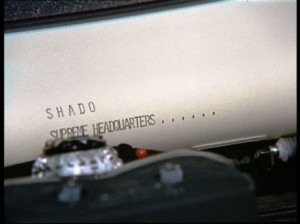
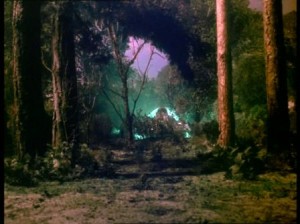
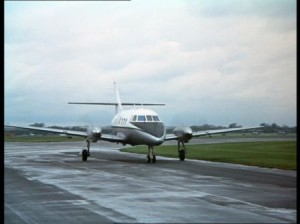
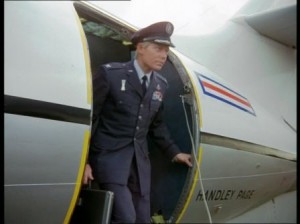
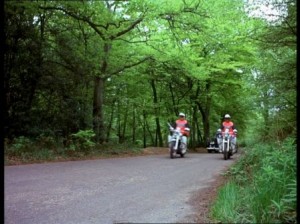

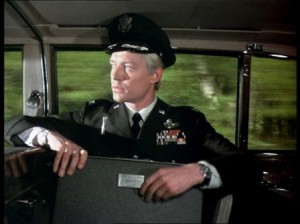
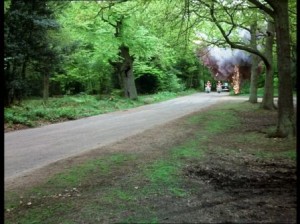
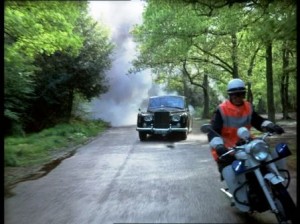
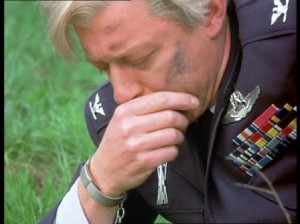
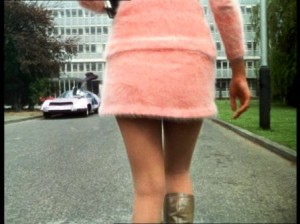
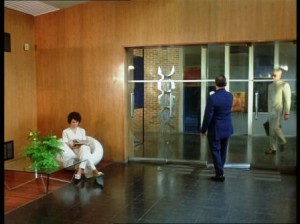
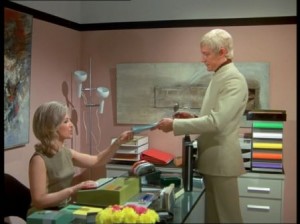

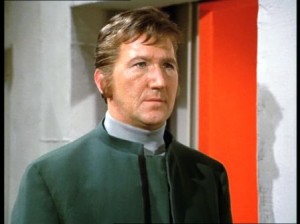
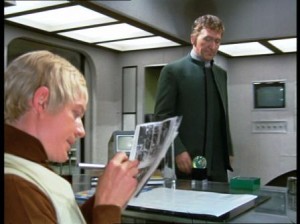


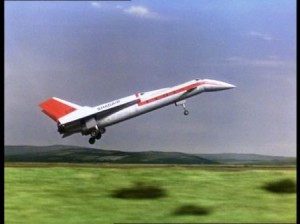
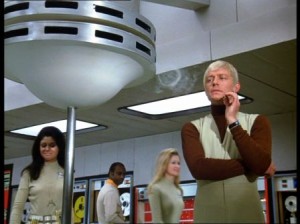
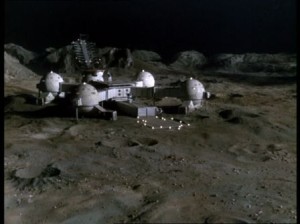
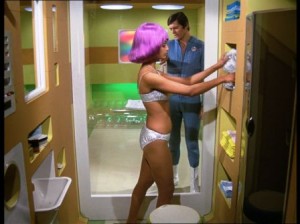
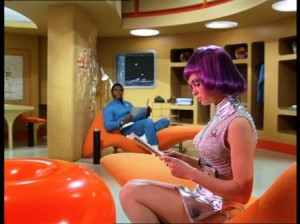
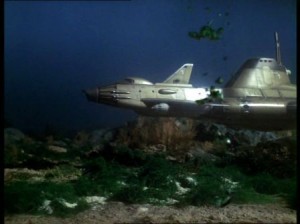
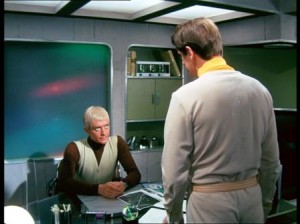
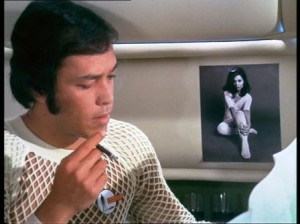
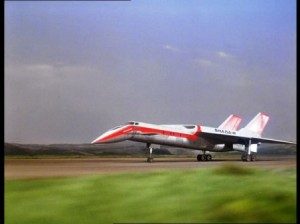

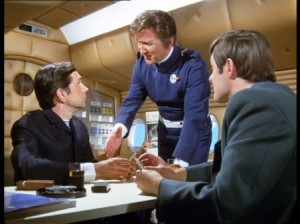


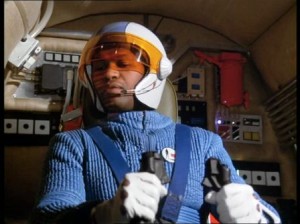
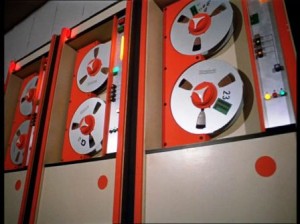
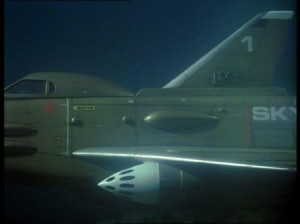
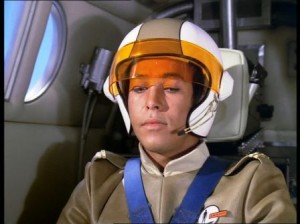
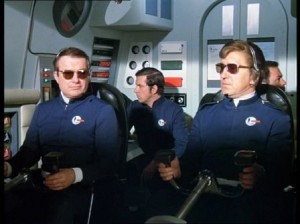
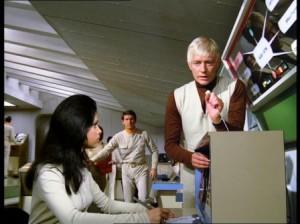
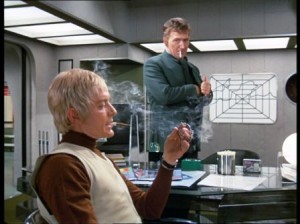
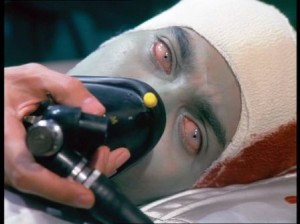
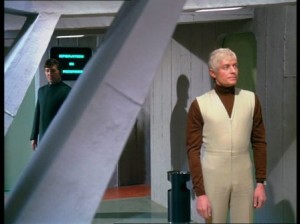

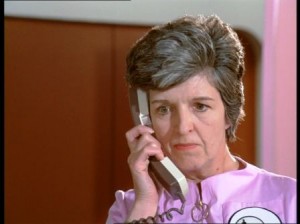
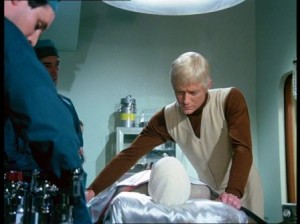
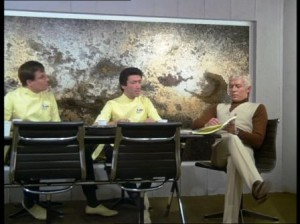
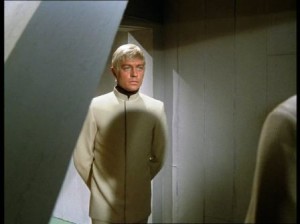
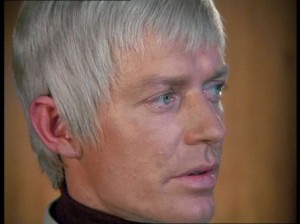
On Col Strakers uniform, after the Rolls Royce crash, his USAF ribbons are in wrong order, plus he is wearing an enlisted Good Conduct Ribbon (Lt Blue ribbon w/ 2 red white n blue stripes) Unless he was enlisted then became an officer. You’d think that Century 21 productions would have called any of the 12 US Air Bases in the UK and asked “hey whats the proper ribbon sequence”
Hi James, there is an explanation in the Ed Straker ‘bio’ here:
http://ufopedia.edstraker.com/index.php?title=Ed_Straker
under ‘Insignia and Medals’
The medals and uniform worn by Straker in UFO were the same as the ones worn by Roy Thinnes in the Gerry Anderson film Doppelganger (1969). One of the reasons for the ‘error’ is that it was illegal to portray ‘real’ medals in a film/tv show etc.
G. Anderson noted that M. Billington joined UFO at the time when the production moved from Elstree Studios to Pinewood Studios and they had a break because of Ed’s broken ankle.
To my information “The Sound Of Silence” was the first episode that was continued after the break when MGM was closed. There were quite a lot of episodes that were shot at Elstree with M. Billington involved, weren’t they?